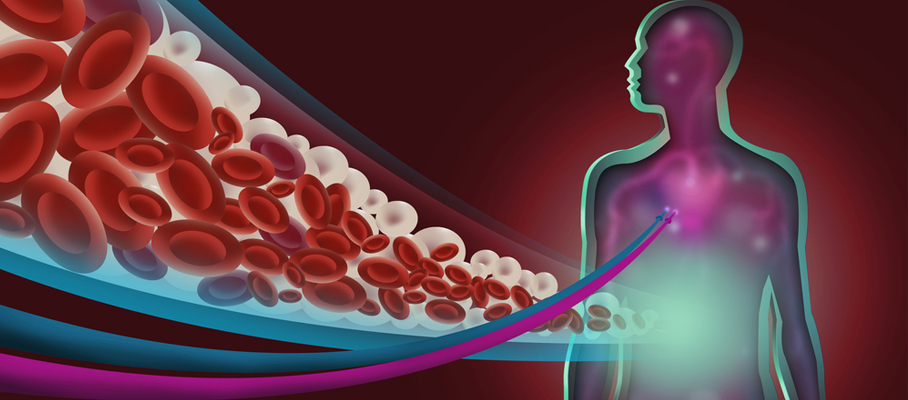
Type 5 Diabetes Explained: Symptoms, Risk Factors and Prevention
For years, Type 5 diabetes was described in medical literature as malnutrition-related diabetes and recognised in some regions, yet it lacked a formal classification. This changed recently when the International Diabetes Federation (IDF) formally reintroduced it as Type 5 diabetes, drawing renewed attention to a form of diabetes that often develops gradually, particularly in low- and middle-income countries. With its official recognition now in place, there is a growing need to better understand it for effective prevention and management. This blog explores key aspects of Type 5 diabetes, including its signs, risk factors, and prevention strategies. Let’s start by understanding the condition.
What Is Type 5 Diabetes?
Type 5 diabetes is a form of diabetes that arises from long-term malnutrition, particularly in individuals who are underweight or have had insufficient nutrition since childhood. This condition results from the body's inability to produce or use insulin effectively due to nutrient deficiencies. It shares some similarities with other forms of diabetes and its primary difference lies in its direct connection to poor nutrition rather than genetics or lifestyle factors alone. Type 5 diabetes tends to develop gradually and is often observed in regions with limited access to proper nutrition, especially in low- and middle-income countries.
What Causes Type 5 Diabetes?

Type 5 diabetes develops primarily due to long-term malnutrition, particularly during the early years of growth and development. When the body is consistently deprived of essential nutrients—such as protein, iron, and certain vitamins—it can affect the normal functioning of the pancreas. Over time, this may reduce insulin production and impair the body’s ability to manage blood glucose levels.
This form of diabetes is not associated with excess weight or autoimmune damage, but rather with a history of undernourishment. It tends to occur in individuals who are lean, often with a low body mass index (BMI), and may have experienced delayed physical development or frequent infections during childhood due to
poor nutrition. Environmental and social factors also contribute—such as poverty, limited access to health services, and diets lacking in variety. These conditions often persist across generations, increasing the risk for malnutrition-related disorders like Type 5 diabetes.
Common Symptoms of Type 5 Diabetes
The symptoms of Type 5 diabetes often develop gradually and may go unnoticed in the early stages. Because it typically affects individuals who are already undernourished, some signs can be mistaken for general weakness or poor health.
Common symptoms include:
- Unexplained weight loss – due to reduced insulin production and poor nutrient absorption
- Constant fatigue – as the body struggles to use glucose for energy
- Frequent urination – a common response to high blood sugar levels
- Increased thirst – triggered by fluid loss through excessive urination
- Slow-healing wounds – linked to poor circulation and low immune function
- Blurred vision – caused by fluctuations in blood glucose levels
- Recurring infections – such as skin, gum, or urinary tract infections, due to lowered immunity
In children or young adults, additional signs may include delayed growth or puberty. Since the condition often progresses silently, it’s important to pay attention to subtle symptoms—especially in those with a history of poor nutrition.
Risk Factors to Watch Out For
Type 5 diabetes is strongly linked to long-term nutritional and environmental challenges. Understanding the key risk factors can help identify those who may be more vulnerable to developing the condition:
- Chronic malnutrition: A history of malnutrition, particularly during early childhood, can affect the development and function of the pancreas, leading to reduced insulin production over time.
- Low body weight or BMI: Individuals with consistently low body mass may have inadequate fat and muscle stores, which can affect how their body processes and stores glucose.
- Stunted growth or delayed development: Poor nutrition during the growth years can result in delayed physical development or shorter-than-average height, both of which are often seen in those at risk.
- Lack of dietary variety: Diets that are low in protein, essential vitamins (such as B-complex and vitamin A), and minerals (like zinc and iron) contribute to poor metabolic health and may increase diabetes risk.
- Frequent childhood infections: Recurrent illnesses—such as diarrhoea, respiratory infections, or parasitic diseases—can place stress on the body and worsen nutritional deficiencies, further impacting glucose metabolism.
- Poverty and food insecurity: Limited financial resources often mean irregular meals, poor diet quality, and reduced access to medical care—factors that can contribute to both malnutrition and delayed diagnosis.
- Living in low- and middle-income regions: Type 5 diabetes is more common in regions where undernutrition remains a widespread concern. In many of these areas, the condition may go unrecognised for years due to limited awareness and diagnostic tools.
How Is Type 5 Diabetes Treated?
Treating Type 5 diabetes involves more than just controlling blood sugar—it also focuses on reversing the effects of long-standing malnutrition. Here are the key parts of treatment:
Nutritional Rehabilitation
The first step is to improve the individual’s nutritional intake. This includes high-energy, protein-rich foods, along with essential vitamins and minerals. Meals should be frequent and balanced, using affordable and locally available ingredients to support healthy weight gain and metabolism.
Blood Sugar Monitoring and Medication
Some individuals may need low doses of insulin or oral diabetes medicines. Since undernourished individuals are more prone to low blood sugar (hypoglycaemia), careful monitoring is essential to avoid complications.
Regular Medical Follow-ups
Regular follow-ups help track nutritional progress, blood sugar levels, and overall recovery. Doctors may adjust treatment plans based on improvements in weight, appetite, and energy levels.
Treatment of Associated Conditions
People with Type 5 diabetes often have other issues such as anaemia, chronic infections, or vitamin deficiencies. Addressing these alongside diabetes is important for overall recovery and better treatment response.
How Can You Prevent Type 5 Diabetes or Its Progression?
Preventing Type 5 diabetes—or slowing its effects—often starts with addressing the root causes of malnutrition and improving awareness in at-risk communities. Here are some important steps:
- Prioritise a balanced and nutritious diet: Encourage meals that include enough calories, protein, and essential vitamins and minerals. Even small changes, like adding pulses, leafy greens, dairy, or fortified foods, can make a difference—especially in areas where resources are limited.
- Improve nutrition in early childhood: Good nutrition from pregnancy through early childhood plays a key role in preventing long-term complications. Mothers and caregivers should be made aware of the importance of nutrition during the first 1,000 days of a child’s life.
- Identify and treat infections early: Repeated infections can worsen poor nutrition and stress the immune system. Ensuring access to basic healthcare and timely treatment is essential, especially in remote or underserved regions.
- Monitor growth in undernourished children: Routine tracking of height, weight, and overall development helps catch early signs of nutritional deficiency and metabolic problems—giving a chance for early action.
- Raise awareness through schools and community groups: Educating children, parents, teachers, and health workers about the signs of malnutrition and diabetes can lead to faster recognition and timely care. Awareness campaigns can also help reduce stigma.
Consult Today
Living with or being at risk of Type 5 diabetes can raise many questions, especially when the condition is not widely known. Getting the right medical support can make a real difference. At Blood Sugar Clinic, our endocrinologists can help you understand the condition better, guide you through appropriate treatment options, and support you in managing it over time. If you have concerns about symptoms or risk factors, it’s worth speaking to a specialist. Book an appointment with an endocrinologist at Blood Sugar Clinic and take a step towards better health and well-being.
Frequently Asked Questions
Can children or teenagers get Type 5 diabetes?
Yes, particularly those who have experienced prolonged malnutrition during childhood. The condition often begins in adolescence or early adulthood, but the nutritional deficiencies leading to it usually start much earlier. In many cases, the signs can be subtle and progress slowly over time.
How do doctors diagnose Type 5 diabetes?
Currently, there’s no single test designed specifically for Type 5 diabetes. Diagnosis typically involves a combination of blood sugar tests, assessment of the person’s nutritional history, signs of past undernutrition (such as low muscle mass or delayed growth), and the exclusion of other common forms of diabetes. A careful clinical evaluation is essential.
Is insulin always required for treatment?
Not always. Some people may need insulin, especially if their pancreas has been significantly affected. Others may manage with oral medications and a carefully monitored diet that addresses nutritional needs. Treatment decisions depend on individual health, blood sugar levels, and how the body responds to food and medication.
Can Type 5 diabetes lead to long-term complications?
Yes, if it’s not managed properly, it can lead to complications similar to other types of diabetes. These may include nerve damage, kidney problems, eye issues, and poor wound healing. Early diagnosis and regular monitoring can help reduce the risk of these outcomes.
Is it possible to reverse Type 5 diabetes?
The condition may not be fully reversible, but it can be managed well with the right care. Improving nutrition, managing blood sugar levels, and addressing any underlying health issues can help a person live a healthy life and prevent the condition from worsening.
Is there a genetic link to Type 5 diabetes?
Unlike Type 2 diabetes, which often runs in families, Type 5 diabetes is more strongly connected to long-standing undernutrition than genetics. That said, a family’s access to food, healthcare, and living conditions can sometimes affect more than one generation.
What role does diet play in managing this condition?
A well-balanced, nutrient-rich diet is essential in managing Type 5 diabetes. Unlike typical diabetic diets focused solely on blood sugar control, nutrition for Type 5 also focuses on rebuilding lost muscle, correcting deficiencies, and supporting overall recovery from malnutrition.



